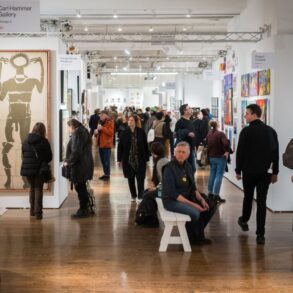To receive Morning Links in your inbox every weekday, sign up for our Breakfast with ARTnews newsletter.
The Headlines
KOREAN ART MARKET TO BENEFIT FROM EASED REGULATIONS. The South Korean art market is expected to get a welcome boost due to new legislation, observers told The Art Newspaper. The first is a Korean heritage law that eases restrictions on exporting post-war Korean art, and the second is a new Art Promotion Act that ensures greater transparency, while addressing concerns over authenticity, though its enforcement remains a question. As part of the latter, an artist “resale right” will come into force in 2027, and the Korean government has committed to promote the domestic art market. Additionally, art sellers will have to sign a warranty guaranteeing an artwork’s authenticity, as well as submitting annual sales reports. As for the heritage law, art adviser Jiyeong Jun, founder of Jung & Co Art Advisory, said nearly 200 artworks were blocked from leaving South Korea between 2018 and 2023, but the new legislation is expected to unblock overseas trade.
IN MEMORIAM: The majestic dancer Judith Jamison has died at the age of 81, reports The New York Times. She became an international star, first as a member and then as director of the Alvin Ailey American Dance Theater company. As the troupe’s leader, she turned the group into one of the most successful modern dance companies in the US. But her distinctive and unusually tall build for a dancer (5 foot 10 inches) made her an unlikely figurehead for the art form. In her 1993 autobiography, “Dancing Spirit,” she wrote, “I was the antithesis of the small-boned, demure dancer with a classically feminine shape.” But the quality became one of her distinctive traits, along with her masterful performance. “Jamison doesn’t show you steps, she uses them to show you a woman dancing,” wrote critic Deborah Jowitt in 1976. “This ability to maintain a human dimension and to project superhuman power and radiance is perhaps one of her most impressive skills.”
The Digest
Members of the Coalition to Protect Chinatown and the Lower East Side in Manhattan protested against the Museum of Chinese in America (MOCA) last week, accusing it of accepting a community buy-back for the building of a new jail, and helping close a beloved local banquet hall. Activists said both moves harmed Chinatown’s residents and economy, justifying their call to boycott of MOCA’s Legacy Awards Gala. [Hyperallergic]
The Montreal-based artist Nico Williams has won the 2024 Sobey Art Award, worth $100,000 and presented at the National Gallery of Canada in partnership with the Sobey Art Foundation. It’s Canada’s largest contemporary art prize. [CBC]
Pompeii plans to limit tourists to a maximum of 20,000 a day after record visitor numbers over the summer, and to introduce personalized tickets as a measure to protect the ancient Roman remains from vandalism. Starting November 15, tickets will include the full name of visitors who are admitted at different time slots during the peak season. [Euronews]
A trove of Canaanite artifacts was found under a recently discovered “monumental structure” in northern Israel’s Tel Shimron, dating back some 3,800 years. They include animal bones, precious, imported ceramics, and two bull statuettes representing Canaanite deities. [Haaretz]
Artist Kenny Scharf, 66, gets his first major museum show in New York’s Brant Foundation, from November 13 to February 28, 2025. He made his psychedelic, cartoonish artworks in the streets and on canvas alongside Keith Haring and Andy Warhol in the 1980s. “Most people think they know my work, but they have never seen it in this volume, and they will be surprised,” said the artist. [The Guardian]
The Kicker
PYRAMID PROTECTOR. Only one person is left to care for and protect Sudan’s priceless Meroë pyramids and ancient antiquities from rampaging armies and looting. Located north of Khartoum, the former capital of the ancient Kingdom of Kush contains some 200 pyramids built nearly 2,500 years ago, packed with intricately carved hieroglyphs. Egypt has 118. But since civil war broke out in April 2023, the caretaker Fozia Khalid, is the last remaining person, a woman in her 60s, at the archaeological site, reports The Financial Times. “The militias are not far,” Khalid said, in reference to the Rapid Support Forces paramilitary group that has invaded most of the country, and has been accused of perpetrating ethnic cleansing. “Nobody has come here in over a year — all is dead here now,” she said from a recently built tourism welcome center. RSF soldiers have reportedly already stolen artifacts from the Sudan National Museum in Khartoum, and smuggled them into South Sudan. “I fear they may come and ravage centuries of history,” said Khalid.






